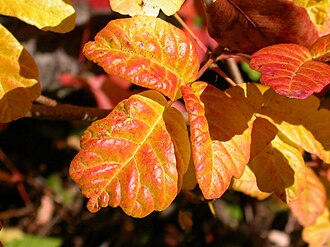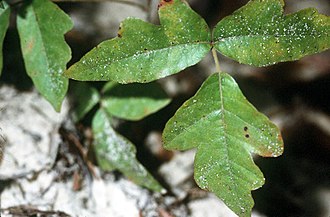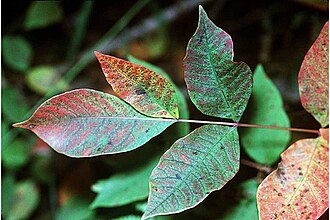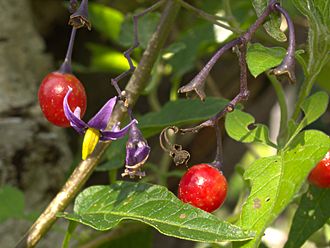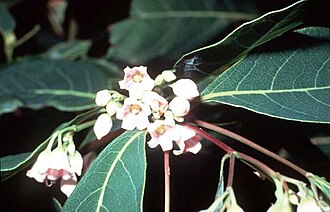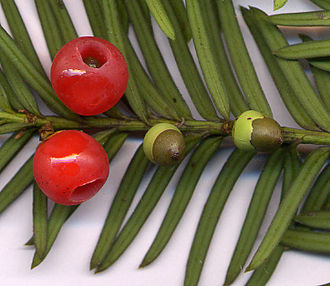Especialidades JA/Flores - Avanzado/Respuestas
1
Para consejos e instrucciones, véase Flores.
2
3
4
Identification keys - also called dichotomous keys - are a series of questions which when answered correctly and in the sequence given reveal the identity of a plant (or animal, or any pretty much other thing that naturalists have studied in the past three of four hundred years).
5
Dar un ejemplo de plantas monoico y dioico. Decir la diferencia entre monocotiledón y dicotiledón.
Perfect and Imperfect
The terms perfect and imperfect as pertaining to flowers relates to their sexuality. Flowers are the sexual organs of a plant, and they may contain male (stamens), female (pistils), or both parts. A plant is said to be perfect if it possesses both male and female equivalent parts. If a flower has only male, or only female structures, it is said to be imperfect.
6
Jesus spoke of the futility of worry:
- Matthew 6:28-30
- "And why do you worry about clothes? See how the lilies of the field grow. They do not labor or spin. 29Yet I tell you that not even Solomon in all his splendor was dressed like one of these. 30If that is how God clothes the grass of the field, which is here today and tomorrow is thrown into the fire, will he not much more clothe you, O you of little faith? - NIV
7
Poison Hemlock
Poison ivy is more common now than when Europeans first entered North America. Real estate development adjacent to wild, undeveloped land has created "edge effects", enabling poison ivy to form vast, lush colonies in such places. It is listed as a noxious weed in the U.S. states of Minnesota and Michigan.
Poison ivy rarely grows at altitudes above 1,500 meters (5,000 ft). | description =Poison Ivy is a woody vine that is well known for its ability to produce urushiol, a skin irritant that causes an itching rash for most people. The leaves appear in groups of three with almond-shaped leaflets. The color ranges from light green (usually the younger leaves) to dark green (mature leaves), turning bright red in fall. The leaflets are 3-12 cm long, rarely up to 30 cm. Each leaflet has a few or no teeth along its edge, and the leaf surface is smooth. The stem and vine of poison ivy are brown and woody, and as the plant grows older, it may begin to climb trees, attaching itself firmly to the tree by sending fibers into its bark. | warning = All parts of the plant are able to produce urishiol, including the roots, leaves, stems, vines, flowers, and berries. People have been known to contract poison ivy by directly contacting the plant, indirectly contacting the plant (i.e., a pet gets into poison ivy and then rubs against its owner), inhaling the smoke from the burning plants, or ingesting the plant (ingesting poison ivy can be fatal). }}
Western Poison Oak
Atlantic Poison Oak
Poison Sumac
Bitter Nightshade
Dogbane
Yew
8
8a
Some of these plants may seem familiar as they were also listed in the previous requirement in the "poisonous plant" category. It is curious, though it should not be surprising, that medicinal plants are also considered poisonous. This would be a good opportunity to talk to your Pathfinders about drug abuse.
Any medicine, if taken incorrectly, can poison the body, and that is why it is important to never take medicines unless there is a need for them, and then it is vital to follow the doctor's instructions (or the instructions on the package for over-the-counter medicines). Note that medicinal herbs found in the wild do not come with instructions! We highly recommend that you stress to your Pathfinders that they should never attempt to medicate themselves or others using these plants, as it can be very dangerous or even fatal!
Poison Hemlock
Poison hemlock has been used as a sedative and for its antispasmodic properties. It was also used by Greek and Persian physicians for a variety of problems, such as arthritis. However, it wasn't always effective as the difference between a therapeutic and a toxic amount is very slight. Overdoses can produce paralysis and loss of speech being followed by depression of the respiratory function and then death.
Poison Ivy
Extremely dilute forms of poison ivy are used in homeopathic medicine, most often as a remedy for musculoskeletal complaints with progressive stiffness that worsens with cold, wet, or inactivity and improves with motion, warmth, and use. The patient may have a red tip of the tongue or a red triangle on the tongue, herpetic outbreaks, and itchiness that improves with very hot water.
Bittersweet
Bittersweet is used in homeopathy and herbalism. Its main usage is for conditions that have an impact on the skin, mucous membrane and the membrane (synovial membrane) around the joints. Bittersweet is considered by some to be a herbal remedy for treating herpes and allergies.
Dogbane
Dogbane was used in herbal medicine to treat syphilis, rheumatism, intestinal worms, fever, asthma, and dysentery. Although the toxins from the plant can cause nausea and catharsis, it has also been used for slowing the pulse.
Pacific Yew
The Pacific Yew Taxus brevifolia, native to the Pacific Northwest of North America, and Canada Yew Taxus canadensis are the sources of paclitaxel, a chemotherapeutic drug used in breast and lung cancer treatment and, more recently, in the production of the Taxus drug eluting stent by Boston Scientific.
8b
8c
We restate the requirements here for your convenience, but for instruction, we ask you to go to the entry on the Flowers honor.
- a. Arrange, draw or photograph a series of at least six flowers showing in order the colors of the rainbow: red, orange, yellow, green, blue, violet.
- b. Submit fresh, pressed or dried flowers which have: five petals, four petals, three petals, no petals.
- c. Distinguish and name two out of five wild or cultivated flowers by their odor, while blindfolded.
- d. List flowers that you have observed being visited for food by the following:
- 1. Birds
- 2. Honeybees
- 3. Bumblebees
- 4. Butterflies
- 5. Moths
- e. Watch a flower for at least ten minutes in the sunshine, and at least ten minutes after dusk, and report on insect visitors. State the number and kind of visitors and name of flower.
References

